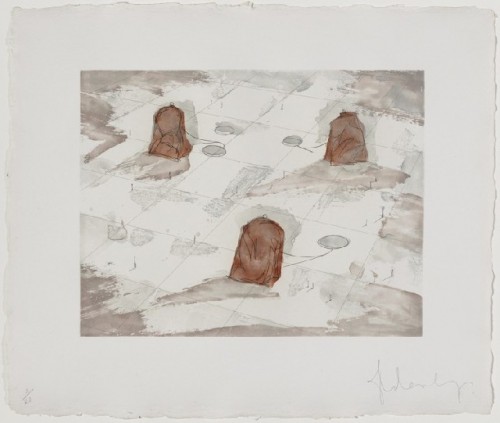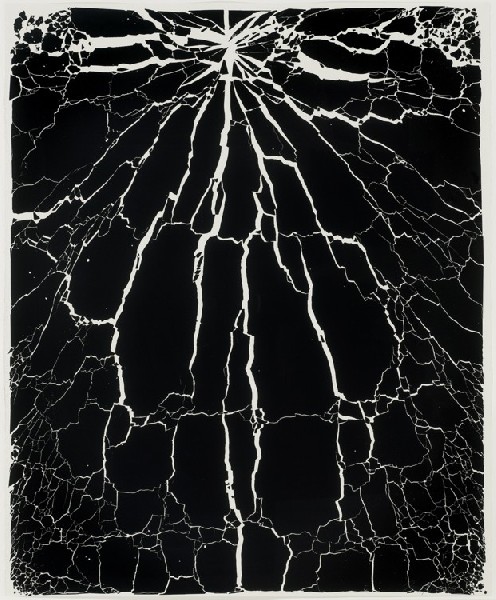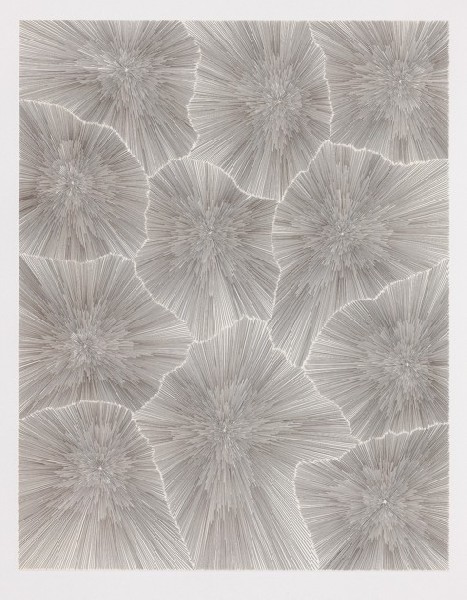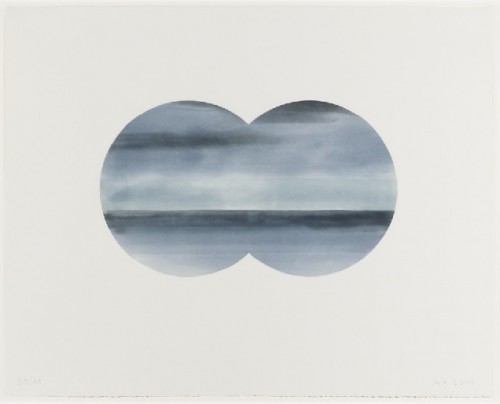New Works: Prints Drawings Collages
MFA Embraces International Living Artists Working on Paper
By: Shawn Hill - Jul 29, 2010
New Works: Prints, Drawings, Collages
July 28, 2010 through May 1, 2011
Museum of Fine Arts, Boston
www.mfa.org
This show of contemporary works acquired over the last 6 years by the Museum of Fine Arts reveals an intelligent, if not daring, acquisitive eye. Curator Clifford S. Ackley praised each and every work in great detail in the press preview, as usual finding an audience in need of education more than convincing regarding some of the more esoteric pieces. The show is tasteful, and does seem to hinge on an appreciation of precision and masterful control of medium. Perhaps that's a natural for works on paper, as big sloppy gestures don't usually make as much sense as carefully precise explorations. There's a surprising amount of handmade work here that looks almost computer-generated. But there are expressive bursts of color and moments of great feeling and vision as well.
These are the sort of minor but solid pieces one acquires in order to round out a collection, scholarly additions to already held masterpieces that the museum proudly displays. Are there any hints here for the expansiveness that will be needed to fill the expansive new galleries in the nearly-completed wing in the fall? If not there should be, because some of these works are treasures.
Perhaps least precise but most expansive of vision is a lovely aquatint that looks like a watercolor by Claes Oldenburg, "Colossal Tea Bags in the City Square," 1976. Oldenburg's modest proposal for urban improvement comprises giant droopy teabags, sagging in their burnt umber splendor at a height of two or so stories. The "paper" tabs hanging from strings become ponds of water in an endless city plaza. Well, one can dream.
James Sienna's "Upside Down Devil Variation" is inspired by crystalline forms. This engraving overlays sunbursts of radial lines, so that they become like scales or maybe the frayed ends of severed veins of rock. There's an elegant abundance of minimal elements, contradictory but not unbalanced.
More "hot" and expressive are Swiss artist Marcus Reitz' "Gaze" from 2001, and Austrian Arnulf Rainer's "Red Cross" from about 1990. "Gaze" might have been content to be another watery aquatint, here a vista of an oceanic horizon line. But Reitz has fun with printing from a shaped plate; the vista is embossed into the paper in the shape of binocular circles, adding a layer of narrative to what might have been a near abstract landscape. Suddenly it's cinematic.
Rainer's intense drypoint (a technique where one literally scratches up a metal plate in order to provide channels for the ink) fits a flurry of aggressive marks into a looming cruciform shape, making the title literal but no less evocative as the red stains the otherwise white paper.
What a smart move to get on the Tara Donovan bandwagon, too. Following her recent bravura showing at the Institute of Contemporary Art, the MFA chooses a print with an electric vitality. These rough radial lines look like lightning flashing at night, or maybe a glistening web, or (most accurately) a pattern of broken glass. Donovan did in fact ink pieces of broken glass to use as her printing plates, making for a simple and dramatic graphic blast of black and white. Danger and disaster seems to be indicated, for all that the piece is also completely detached and evident of its own well-conceived process.
Other intriguing works include Ralph Coburn's geometric colleges (he was a colleague of Ellsworth Kelly's); Terry Winter's graphite drawing of ornate knots; Frank Auerbach's etched portraits of Lucien Freud; and a masterpiece lithograph by Jasper Johns from 1995, where the old master continued in near-monochrome (but oh those hints of blue and black amidst all the shadowy blacks and grays) to sift through and recombine fragments of his own illustrious past in a compelling new synthesis. Ackley's delight in presenting these gems is easy to understand.






